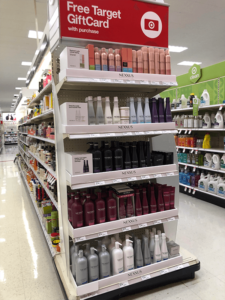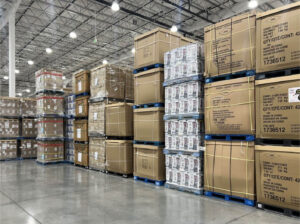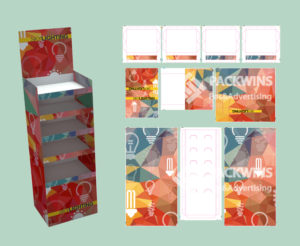Cardboard displays are a popular choice for retail environments due to their affordability, flexibility, and eco-friendliness. However, understanding the weight limits of cardboard displays is crucial to ensure they remain stable and effective for your display needs. Here’s a breakdown of how to assess the weight capacity of cardboard displays and the factors that affect their strength.
Understanding Cardboard Strength
Cardboard’s weight-bearing capacity depends on its material and design. The most common type of cardboard used for displays is corrugated cardboard, which consists of three layers: an inner fluted layer and two outer flat layers. The strength of the cardboard depends on several factors:
1. Material Type
- Single-wall cardboard: This is the most commonly used material for retail displays. It can typically hold weights between 10-15 kg (22-33 lbs) per square meter, depending on the flute size and cardboard grade.
- Double-wall and triple-wall cardboard: These types offer more strength and can support up to 30-40 kg (66-88 lbs) or more, making them suitable for larger or heavier items.

2. Flute Size
- A-flute: The largest and most rigid, offering the highest strength.
- B-flute: More common for display purposes, offering a balance between strength and cost-efficiency.
- C-flute: A versatile option that is stronger than B-flute but more cost-effective than A-flute.
- E-flute: A thinner, lighter option used for smaller, less heavy products.
3. Weight Distribution
The distribution of weight is as important as the total weight itself. Cardboard displays are designed to distribute weight evenly across the display to avoid tipping or collapsing. Displays with more complex structures like shelves or multiple tiers should be checked for balance and support.
Factors That Impact Weight Capacity
While the material and structure of the cardboard are important, other factors can impact the weight limits of cardboard displays:
1. Display Design
A simple, single-tiered display will hold less weight than a tiered, multi-shelf unit. The design and the number of folds or supports can enhance the display’s capacity. Endcap displays or floor-standing displays that use additional structural supports can hold more weight than countertop displays.
2. Environmental Conditions
The environment in which the display is used plays a significant role in its weight-bearing ability. High humidity or exposure to water can weaken cardboard, reducing its capacity to hold heavy items. Display stability can also be impacted by temperature fluctuations.
3. Reinforcement Techniques
For displays requiring higher weight limits, manufacturers can add additional reinforcements such as corrugated partitions, internal supports, or extra fluting layers. These reinforcements can increase the display’s strength and prevent it from buckling under heavy products.
Practical Applications and Considerations
1. Lightweight Products
For products like small accessories, cosmetics, or packaged goods, a basic single-wall cardboard display may suffice, with a weight capacity of around 10-15 kg per square meter.
2. Medium to Heavy Products
For slightly heavier items like canned goods, health products, or small electronics, double-wall cardboard displays with additional internal supports may be necessary to ensure stability. These displays can handle weights of 30 kg or more.
3. Bulk or Large Items
When displaying bulkier products like outdoor equipment, packaged food, or furniture, triple-wall displays or pallet displays made of thicker, reinforced corrugated cardboard may be the best choice. These displays can handle heavy loads of 50 kg or more, especially when designed with extra stability features like bracing or specialized structures.
Ways to Support Weight in Cardboard Displays
While the material and design of cardboard displays provide a solid foundation for holding various products, there are several ways to further enhance the weight-bearing capacity and ensure the display stays stable, especially when handling heavier items.
1. Reinforced Corners and Edges
The corners and edges of cardboard displays are particularly vulnerable to bending and collapse under weight. Adding extra layers of cardboard or using reinforced corner supports can help distribute the load more evenly, preventing the structure from buckling.
2. Internal Supports and Bracing
For multi-tiered or freestanding displays, internal supports like vertical partitions or cross-bracing can provide additional stability. These internal structures help distribute weight more evenly across the entire display, reducing pressure on the outer layers of the cardboard. A simple way to achieve this is by adding diagonal supports that prevent the display from tipping over.
3. Use of Double or Triple Wall Corrugated Cardboard
When planning for heavier products, consider using double-wall or triple-wall corrugated cardboard, which is significantly stronger than single-wall cardboard. This can be further supported by reinforcing the structure with added fluting layers in critical areas, such as shelves or bases, to ensure they hold up under more weight.
4. Shelf Dividers and Reinforced Shelves
For displays holding smaller items that may be stacked, reinforced shelving with dividers can help ensure the items are securely held in place without putting too much weight on any one part of the display. Shelf dividers provide extra stability, preventing heavy products from shifting or causing imbalanced pressure on weaker parts of the display.
5. Heavy-Duty Base and Feet
The base of a display is where most of the weight is concentrated, so using a wider base or feet to distribute the weight more evenly across the floor can prevent tipping. A larger footprint on the base offers more contact area with the ground, which helps in distributing the weight of the display across a larger surface.
6. External Bracing or Strapping
For displays that require extra support, you can also use external strapping or bracing. This involves using materials like ropes, metal supports, or elastic bands to hold the display in place, particularly when the display is holding a larger number of products or heavier items.
7. Use of Non-Toxic Adhesives
For securing heavy items, high-strength adhesives designed for cardboard can also be used. These adhesives help bind the structure together and keep heavier products in place without causing the display to collapse under pressure.
8. Weighted Bottoms
For displays prone to tipping, adding weighted bottoms—either with cardboard layers or small metal weights inside the display—can significantly improve stability. This ensures that the weight is evenly distributed from top to bottom, reducing the risk of top-heavy tipping.
By reinforcing critical areas and using the right combination of materials, cardboard displays can be adapted to handle a wide range of product weights. Whether you’re displaying small, light items or larger, heavier products, these support techniques help ensure that the display remains secure and visually appealing while maintaining its structural integrity.
Conclusion
Understanding the weight limits for cardboard displays ensures your retail setup is safe, effective, and visually appealing. Be mindful of the material, design, and environmental factors when choosing the right display for your product. When in doubt, consult with a professional supplier who can help you choose the right type of cardboard and reinforce the structure for maximum weight-bearing capacity.
If you’re ready to explore customized, weight-tested cardboard displays for your retail needs, Packwins can provide tailored solutions designed for durability, functionality, and aesthetics. Contact us today to discuss your display requirements.



